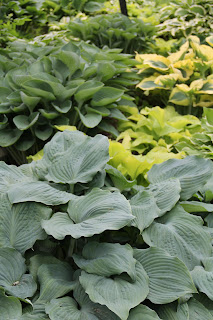Siberian Iris
Seed germination
How to improve Siberian Iris seed
germination
Siberian iris seed requires cold stratification, a chilling and
drenching which removes enzymes which delay germination. This can be
accomplished by sowing seeds in pots and burying the pots to the rim in the
ground over winter, frost and rainfall soften the seed coat. This nearly
natural process is not completely effective and may require several winters to
achieve full germination of viable seeds. In the process the seed itself may
loose viability.
The artificial process described below improves the
percentage of seed germination; generally well above 85%, in the first year.
I collect the mature seed pods as they begin to split open
in fall. I store the collected seed in marked
envelopes, one for each cross, and let the seed dry in envelopes, placed in a
cool dry location until January. Watch for fungus on the drying seed.
In January, I encase the seeds from each cross into nylons
cut into squares and bundle with a color coded twist tie or rubber band. The
bundles are stored in margarine containers (typically I mark the container with
the crosses in). I fill the container with tap water to the brim and burp
shut.
The containers are stored in the refrigerator for at least
120 days, generally through mid-April. Typically
temperatures should be between 34° and 41°F. The water is replaced on a weekly basis. The water is brownish-green, avoid splashing your eyes!
 |
| Bagged seed in container |
In mid-April I broadcast the seed in pots or trays and move
outdoors to germinate as high temperatures move from the 50s through 70s. I use
a soil mix approximately 60 % peat moss with garden soil, planting the seed
just below the surface. I water frequently and sprinkle more peat moss over
exposed seed.
To get an additional jump on the growing season I sometimes
start the process earlier and germinate seed under grow lights beginning in
March.
Another approach after cold stratification is to sow seed in
small pots which are bagged with pieces of fruit. The ripening fruit releases ethylene
gas which aids in germination.
When the seedlings are 6 to 8 inches tall they are transferred
to the garden. Space the seedlings
roughly 8 to10” apart. Some plants will bloom in the second year but nearly all
will bloom in three years.
 |
| Seedling blooming two years from planting |














